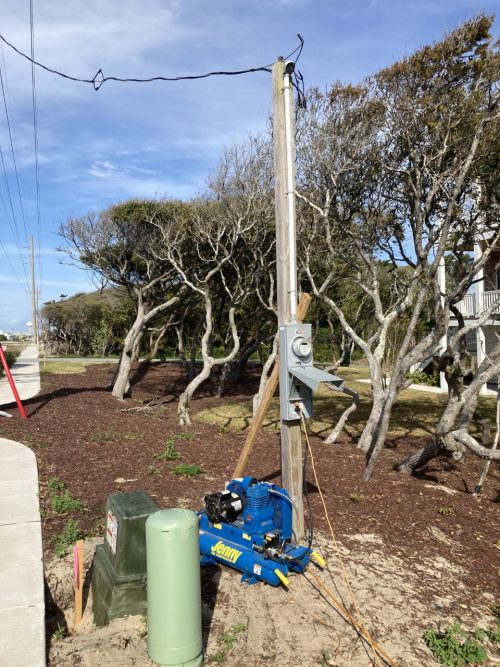2020 NEC | Article 590, Temporary Installations

By: Robert Key | Jun 03, 2022
What is a temporary electrical installation—where would we find one?
Temporary electrical installations exist on just about every construction site, not to mention many other locations, which can range from tent cities constructed after a natural disaster, to hazmat reclamation projects, to other situations where power is needed for a limited timeframe. Temporary electrical installations present a special set of hazards; therefore, they are treated separately in Article 590.
For example, when a previously used pole-mounted “saw service” is installed on a construction site, would it be correct to say that the saw service is existing—since it has been used in other locations before? This would not be an accurate statement, since each time it is used at a different location it is a new installation that must be inspected and meet the current Code. The AHJ may require that the pole be brought up to snuff via the installation of in-use covers, WR-type (weather resistant) outlets, or others. This leads to another question: When reinstalling previously used services, parts, or components in a temporary installation, how do I determine if they are safe?
To answer this important question, we must determine which parts might wear out. Which ones wear out most quickly? Have replacement parts been installed properly? How can I identify one that might fail? One of the most important aspects of the installation is the overcurrent protective device (circuit breaker) and GFCI protection, which is often incorporated into the device. Per NEC Section 590.6(B), all other outlets, including those rated at 250 volts, must have either GFCI protection or comply with the assured equipment grounding conductor program per Section 590.6(B)(2). If the breaker fails to trip during an overcurrent condition or a fault condition, damage to property or loss of life could be the result.
Let’s look at NEC Section 590.8(A) and (B) as well as the Informational Note to see what we can learn.
Section 590.8(A)
Overcurrent Protective Devices. Where Reused.
Where overcurrent protective devices that have been previously used are installed in a temporary installation, these overcurrent protective devices shall be examined to ensure these devices have been properly installed, properly maintained, and there is no evidence of impending failure.
Examination of previously used components is a basic requirement. What do we look for? The Informational Note for Section 590.8(B) is very useful.
Section 590.8(B)
Overcurrent Protective Devices. Service Overcurrent Protective Devices.
The Informational Note states:
The phrase “evidence of impending failure” means that there is evidence such as arcing, overheating, loose or bound equipment parts, visible damage, or deterioration. The phrase “properly maintained” means that the equipment has been maintained in accordance with the manufacturers’ recommendations and applicable industry codes and standards.
Per the Informational Note, evidence of impending failure might include:
- Arcing: Look for any evidence such as black marks.
- Overheating: Do any plastic parts look deformed or melted?
- Loose or bound equipment parts: Can the breaker be removed? Do the conductor screws tighten properly? Does the breaker handle operate smoothly?
- Visible damage: Does the breaker look new, or is there evidence of damage or previous repair?
- Deterioration: Are corrosion or rusted parts present?
The information in the remainder of the Informational Note gives us references for manufacturer recommendations and applicable industry codes and standards.
We find here a very reasonable set of guidelines for a visual inspection of used parts in temporary installations. Temporary electrical installations exist in many locations where electrical power is needed for a limited time. Temporary electrical installations present a special set of hazards, and they merit the attention of the installer and inspector so that each installation is as safe as possible, in harmony with the purpose of the Code: The practical safeguarding of persons and property from hazards arising from the use of electricity.

